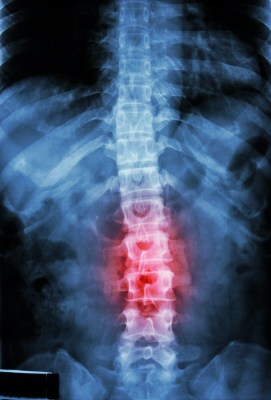No matter your order picking method- piece picking, zone picking, wave picking, sorting systems or pick to box- the success of your warehouse operation is largely reliant on a workforce of productive healthy employees.
They’re hugely invaluable because the picking process itself, “is seen as the most labor-intensive and costly activity for almost every warehouse, where the cost of order picking is estimated to be as much as 55% of the total warehouse operating expense”, according to one logistics website.
Yet these ‘pickers’ are at increased risk for injury, spending a large portion of their day bending to lift boxes of various weights and dimensions.

Still, many employers fail to properly train material handling staff, resulting in more than a million back-related injuries a year. In fact, OSHA cites back injuries as the Nation’s #1 workplace safety problem. They go on to say that back injuries account for, “one of every five workplace injuries or illnesses. Further, one-fourth of all compensation indemnity claims involve back injuries, costing industry billions of dollars on top of the pain and suffering borne by employees.”
If you’re looking to maintain or even improve productivity levels while reducing the cost of worker’s compensation claims, get familiar with The NIOSH (National Institute for Occupational Safety and Health) Work Practices Guide for Manual Lifting.
What is the NIOSH Lifting Equation?
A simple tool that assess the risk of manual tasks in the material handling realm, most notably related to lifting and bending. It’s surmised as an equation using that uses variables like horizontal location, vertical location, vertical travel distance and lifting frequency to determine the safest lifting practices for material handling employees.
What does the NIOSH Lifting Equation Consist of?
Workplace safety pioneers, Ergonomics Plus, and author Mark Middlesworth do a wonderful summary of the NIOSH Lifting Equation in their piece A Step-by-Step Guide to Using the NIOSH Lifting Equation for Single Tasks:
The Recommended Weight Limit (RWL) and Lifting Index (LI) are the primary outputs, used to determine:
- “the maximum acceptable weight (load) that nearly all healthy employees could lift over the course of an 8 hour shift without increasing the risk of musculoskeletal disorders (MSD) to the lower back.”
- “a relative estimate of the level of physical stress and MSD risk associated with the manual lifting tasks evaluated.”
NIOSH Lifting Equation: LC (51) x HM x VM x DM x AM x FM x CM = RWL
Task variables needed to calculate the RWL:
- H = Horizontal location of the object relative to the body
- V = Vertical location of the object relative to the floor
- D = Distance the object is moved vertically
- A = Asymmetry angle or twisting requirement
- F = Frequency and duration of lifting activity
- C = Coupling or quality of the workers grip on the object
Lifting Index (LI): Weight ÷ RWL = LI
Additional task variables needed to calculate the LI:
- Average weight of the objects lifted
- Maximum weight of the objects lifted
The ultimately goal is to reach a lifting index value of less than 1.0 (which denotes the “nominal” risk for healthy employees). Any higher and the risk of low back injury risk increases respectively.
While you can’t entirely prevent back-related injuries in the warehouse, using the OSHA-recommended NIOSH Lifting Equation can save you in both compensation claims and productivity losses.
Still have questions about how to make your warehouse run more efficiently? Contact us or call 855-260-6099.
